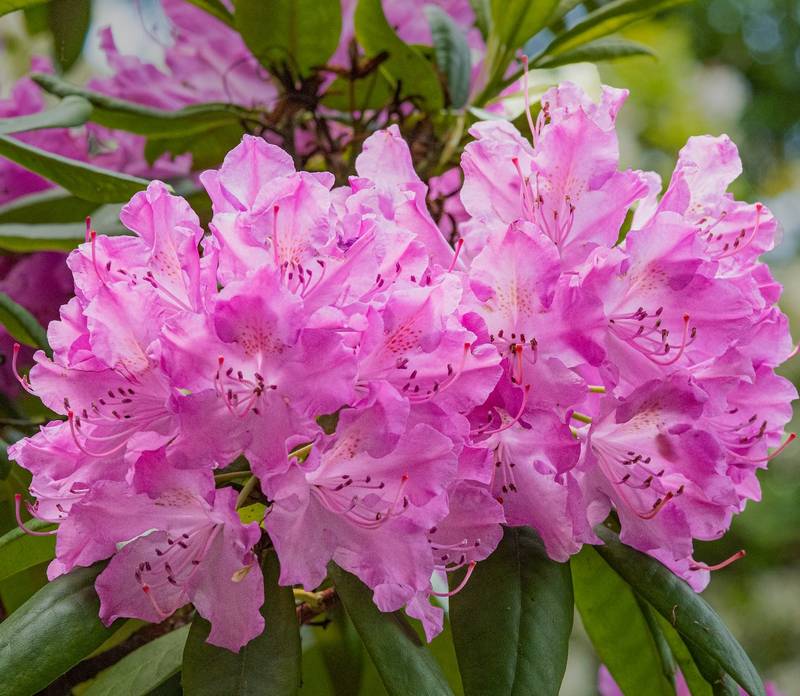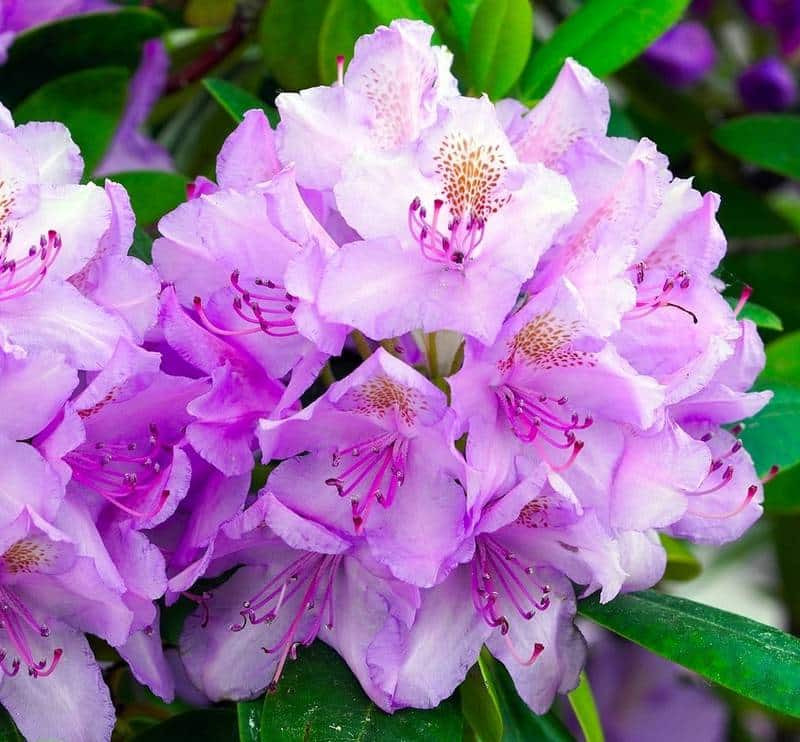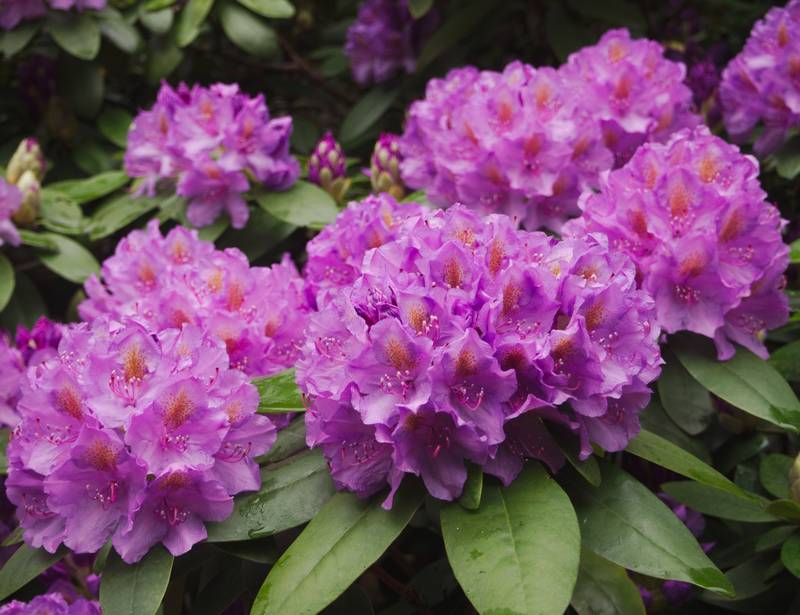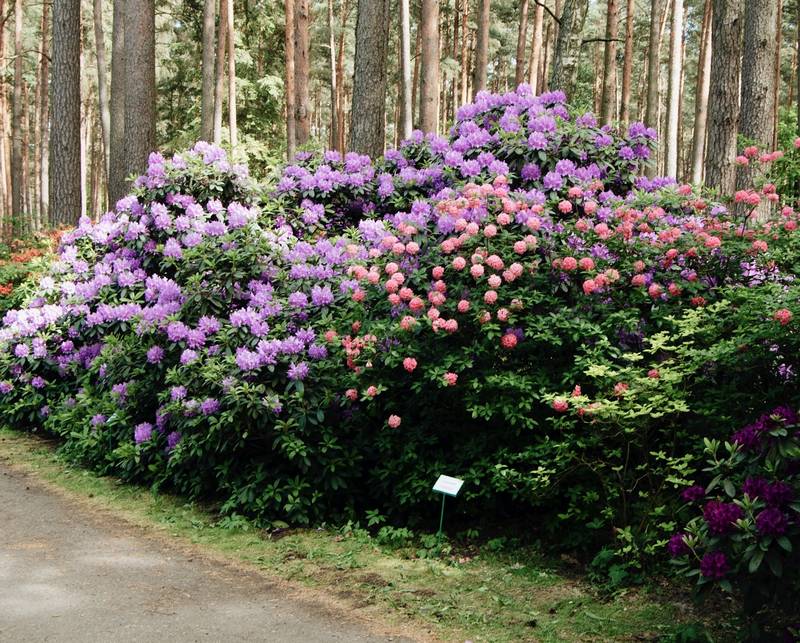Rhododendron and Dogs: Are Rhododendrons Toxic to Dogs?
Are rhododendrons toxic to dogs? Are rhododendrons poisonous to dogs? In this article, we’ll teach you all you need to know about rhododendron and dogs, including answering if dogs will eat rhododendron and what to do if your dog ate rhododendron already. We’ll then explain the two commands that will ensure your dog behaves around rhododendron and other bushes that might be toxic.
Next, we’ll cover more you should know about rhododendron and dogs, such as how to keep dogs away from rhododendrons using barriers. Finally, we’ll instruct you on how to properly care for rhododendron bushes (when to plant, pruning, fertilizer, common problems, sun or shade, leaves yellowing, growth speed, and full size) and more to know when you have dogs. Keep reading!
Are Rhododendrons Toxic to Dogs?

Rhododendrons are toxic to dogs. These beautiful flowering plants contain grayanotoxins, which are harmful to pets when ingested. You must take precautions to have rhododendron and dogs in your garden.
Are Rhododendrons Poisonous to Dogs?
Rhododendrons are poisonous to dogs. The toxicity stems from a substance called grayanotoxin, found in all parts of the plant. Ingestion can lead to a variety of symptoms, including vomiting and diarrhea. Immediate veterinary attention is crucial for suspected poisoning.
Rhododendron Poisoning in Dogs Symptoms
Signs of rhododendron poisoning in dogs include vomiting, diarrhea, drooling, and lethargy. In severe cases, a dog may also experience heart irregularities or go into a coma. The onset of symptoms usually occurs within a few hours of ingestion. Prompt medical treatment is essential to mitigate the effects.
Train the “Leave It” Command
Training your dog to understand the “Leave It” command can be invaluable in preventing them from ingesting dangerous plants like rhododendrons.
- Start by holding a treat in a closed hand and present it to your dog without letting them take it.
- When your dog stops trying to take the treat and pulls away, say “Leave It” and reward them with a different treat.
- Gradually make the exercise more challenging by placing the treat on the floor but covering it with your hand.
- Only reward your dog when they obey the “Leave It” command.
- Practice regularly, and start incorporating the command into daily walks and playtime.
Train the “Drop It” Command
Another useful command is “Drop It,” which can help if your dog picks up something they shouldn’t, like a rhododendron leaf.
- Begin by playing a game of tug with a toy that your dog likes.
- While playing, say “Drop It” and offer a treat or another toy as a trade.
- Once your dog releases the toy, reward them immediately.
- Repeat this exercise several times until your dog understands the “Drop It” command.
- Integrate this command into various situations to ensure your dog will listen even when distracted.
Rhododendrons are toxic to dogs and even potentially lethal. Immediate veterinary care is essential if poisoning is suspected. Proactively training your dog to avoid these plants by using the “Leave It” and “Drop It” commands can make all the difference in keeping your furry friend safe.
It’s important to remember, though, that the underlying behavioral issues (curiosity, anxiety, boredom, etc.) that were causing all of this to begin with will still be present even after learning the commands. And until you address those, any positive changes you see are only going to be temporary.
“Well, how do I make these changes last?”
By getting your dog to truly choose to follow your direction, that’s how. I tried many times to write out how you can do that before deciding it made more sense to just link you to the free video series that explains it better than I’d ever be able to.
The series is by a man named Dan who is one of the world’s leading dog obedience trainers. In it, he teaches you how to put an end to things like your dog getting too close to rhododendrons and all other misbehavior using his fast and easy-to-follow methods.
In the first video, Dan will reveal to you why the two most common methods of dog training only doom you to failure. You can watch the video now by clicking here. Follow the proven system he’ll show you in his series and you’ll never have to spend another second worrying about your dog eating rhododendrons ever again!
Rhododendron and Dogs

Rhododendrons and dogs are a very risky combination. The toxins in the plant can cause gastrointestinal distress, heart complications, and in severe cases, even death to dogs. Seek immediate veterinary attention for a dog that has eaten any part of a rhododendron.
Rhododendron Toxicity in Dogs Treatment
If your dog ate rhododendron, immediate veterinary attention is vital. Treatment often involves induced vomiting, activated charcoal administration, and supportive care such as intravenous fluids. The sooner you act, the better the chances for a full recovery.
Will Dogs Eat Rhododendron?
While some dogs may be deterred by the plant’s bitter taste, others might chew on leaves or branches out of curiosity. There is no definitive answer as to why some dogs are more inclined to eat rhododendron; it may vary from dog to dog.
The plant’s allure could also be tied to its scent or texture, but the specific reason remains unknown. However, due to the plant’s toxic nature, it’s best to take preventive measures to keep dogs away. Learn the two commands your dog should know to stay safe in the first section now.
Are Dead Rhododendron Leaves Poisonous to Dogs?
Dead rhododendron leaves are poisonous to dogs. The toxins do not degrade quickly and can still be present in fallen or dried-up leaves. The danger isn’t just from freshly fallen leaves; even older, decomposed leaves can harbor toxins.
Therefore, it’s very important that you quickly remove any dead leaves from areas where your dog has access, particularly after storms or windy days.
Can Rhododendrons Kill a Dog?
Dogs eating rhododendron can be fatal, especially if not treated promptly. The toxins can cause severe digestive problems and heart irregularities, leading to symptoms such as vomiting, diarrhea, and an abnormally low heart rate.
These conditions can escalate quickly, leading to coma or death in extreme cases. It’s very important to seek immediate veterinary care to counteract the poisoning effectively.
In conclusion, rhododendrons are toxic to dogs and can lead to severe, life-threatening symptoms if ingested. Always seek immediate veterinary care if you suspect your dog has eaten any part of this plant.
You should keep rhododendrons out of reach and take proactive measures like training your dog to avoid them. Learn the two commands your dog should know in the first section now.
Make sure to get this problem handled now, as it will also keep your dog safe around other plants. You then won’t have to worry about things like are pothos poisonous to dogs, is Weigela toxic to dogs, is spirea poisonous to dogs, or are azaleas poisonous to dogs.
Are Rhododendrons Safe for Dogs?

Rhododendrons are not safe for dogs. These plants contain toxic substances that can cause severe gastrointestinal issues, heart complications, and even death if ingested. Immediate veterinary care is essential if a dog ingests any part of a rhododendron.
How to Keep Dogs Away From Rhododendrons
The best way to ensure your dog’s safety is by preventing access to rhododendrons in the first place. Installing barriers like fences or garden mesh around the plants can keep your dog at a distance. Other deterrent methods include sprinkling dog-safe repellents around the plants or using motion-activated sprinklers that deter your dog from approaching.
Dog-Safe Alternatives to Rhododendrons
If you love gardening but also want to keep your dog safe, consider plant alternatives that are non-toxic to dogs. Plants like camellias, hibiscus, and dogwood trees offer similar visual appeal without posing a threat to your pet.
Teaching your dog commands like “Leave It” and “Drop It” is also a great idea to ensure their safety around all plants. You can learn both now in the first section.
How Much Rhododendron Is Toxic to Dogs?
The toxicity of rhododendrons can vary depending on the specific species and the size of your dog. However, even small amounts can lead to poisoning. Ingesting just a few leaves can cause serious health issues in dogs, such as gastrointestinal distress and heart complications.
In conclusion, rhododendrons are not safe for dogs and should be avoided. Preventive measures like barriers and alternative plant choices can significantly reduce the risk. If you suspect your dog has eaten rhododendron, immediate veterinary care is crucial.
Rhododendrons Care

Rhododendrons require well-drained, acidic soil, partial sun, and regular watering to thrive. These ornamental shrubs also benefit from proper planting, timely pruning, and the right fertilizers. Attention to these factors will ensure a healthy and vibrant display of flowers.
Caring for Rhododendrons
Rhododendrons are relatively easy to care for once you understand their basic needs. These plants prefer well-drained soil that is rich in organic matter. Make sure to maintain a soil pH level between 4.5 and 6.0 for optimal growth. Regular watering is essential, but be cautious not to overwater as this can lead to root rot.
Rhododendron: When to Plant
The best time to plant rhododendrons is during the cooler months of spring or fall. This allows the plant to establish its root system before facing the harsher conditions of summer or winter. However, potted rhododendrons can be planted any time of the year as long as you pay extra attention to watering and temperature.
Pruning Rhododendrons
Pruning is an essential aspect of caring for rhododendrons. It’s best to prune shortly after the flowers have wilted, usually in late spring or early summer. This will not only enhance the plant’s appearance but also stimulate new growth. Removing dead or diseased branches is vital for the overall health of the plant.
Rhododendrons Fertilizer
Using the right type of fertilizer can make a significant difference in your rhododendron’s health. Opt for a slow-release, acidic fertilizer that is high in phosphorus. The best time to apply the fertilizer is in late spring, immediately after flowering.
Rhododendron Problems
Rhododendrons are prone to a variety of issues, including diseases like root rot and pests such as aphids or spider mites. It’s important to regularly inspect the plant for any signs of these problems. Early detection and treatment can save your plant from severe damage.
Rhododendron: Sun or Shade?
Rhododendrons prefer partial sun to light shade. While they can tolerate a fair amount of sun, too much direct sunlight can cause the leaves to scorch. Conversely, too much shade can result in poor flowering.
Rhododendron Leaves Yellowing
Yellowing of rhododendron leaves can be a sign of nutrient deficiency, specifically a lack of iron. This can be corrected by adjusting the soil pH or applying an iron-rich fertilizer. It could also indicate overwatering or poor drainage.
How Fast Do Rhododendrons Grow?
The growth rate of rhododendrons can vary depending on the species, but most grow at a moderate pace. On average, these shrubs can grow 4 to 6 inches per year, with some varieties reaching up to 12 inches annually.
How Big Do Rhododendrons Get?
The size of a rhododendron plant can vary widely depending on its species. Generally, they can range from 2 to 20 feet in height. Some dwarf varieties are perfect for small gardens, while larger types may require a more expansive space.
In conclusion, rhododendrons are relatively easy to care for, but attention to detail is critical. From planting to pruning and from fertilization to troubleshooting problems, proper care will ensure that your rhododendrons remain a healthy and beautiful part of your garden.
It’s important to remember, however, that rhododendrons are toxic to dogs. Learn more, including two commands to help keep your dog safe, by going back to the first section now.
You’re probably ready to get going on things now that you’ve got all of your questions about rhododendron and dogs answered, so I’ll let you begin. Good luck, and thanks for reading our article “Rhododendron and Dogs: Are Rhododendrons Toxic to Dogs?”





